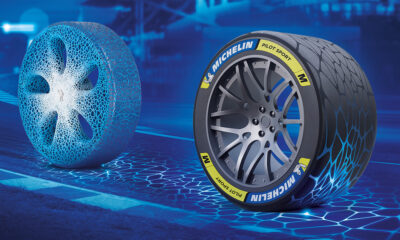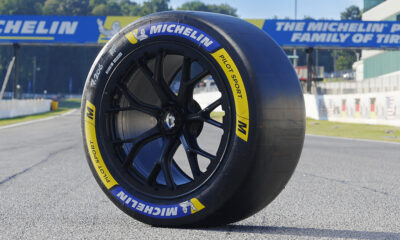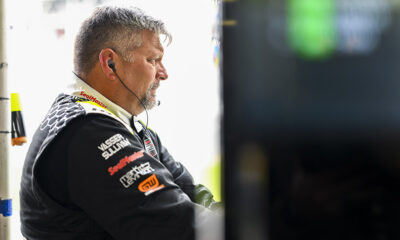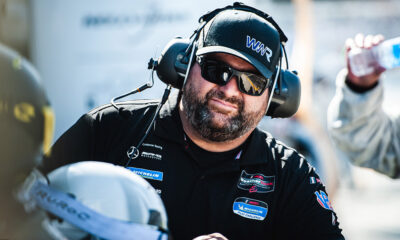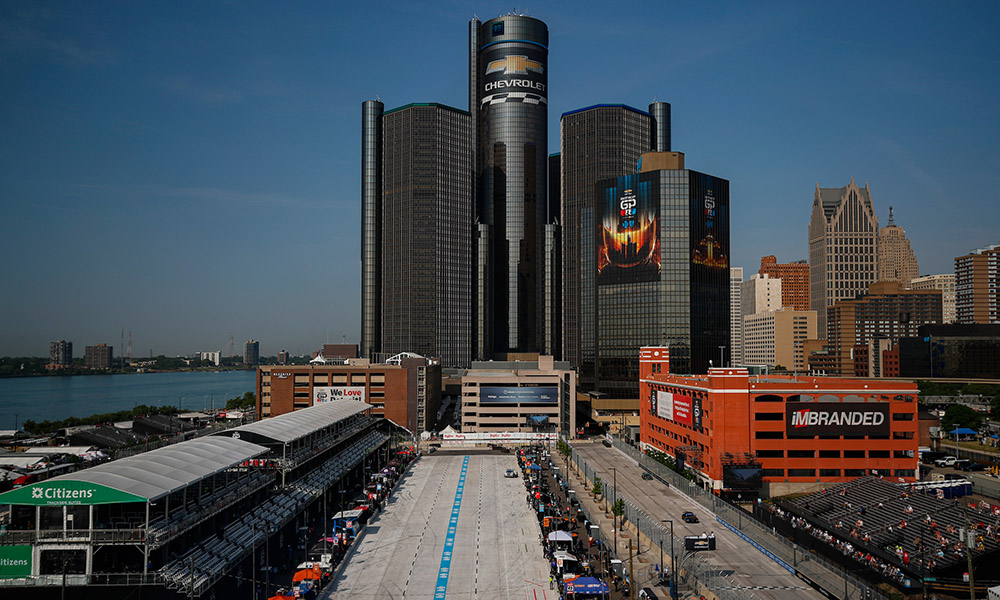
Photo: Jake Galstad/IMSA
The Chevrolet Detroit Grand Prix has arrived, with IMSA and Detroit both riding significant waves of momentum.
The exciting IMSA hybrid GTP prototypes and international racing’s most diverse of group of automakers is producing top competition and record crowds as the WeatherTech Championship makes its downtown Detroit debut.
Fresh from hosting a record-breaking NFL Draft, Downtown Detroit now prepares for a Draft Party of a distinctly different kind.
Having emerged from a long, painful decline and bankruptcy, Detroit celebrates its first population increases since 1957 and anxiously awaits Ford’s dramatic reopening of the Michigan Central Station next week.
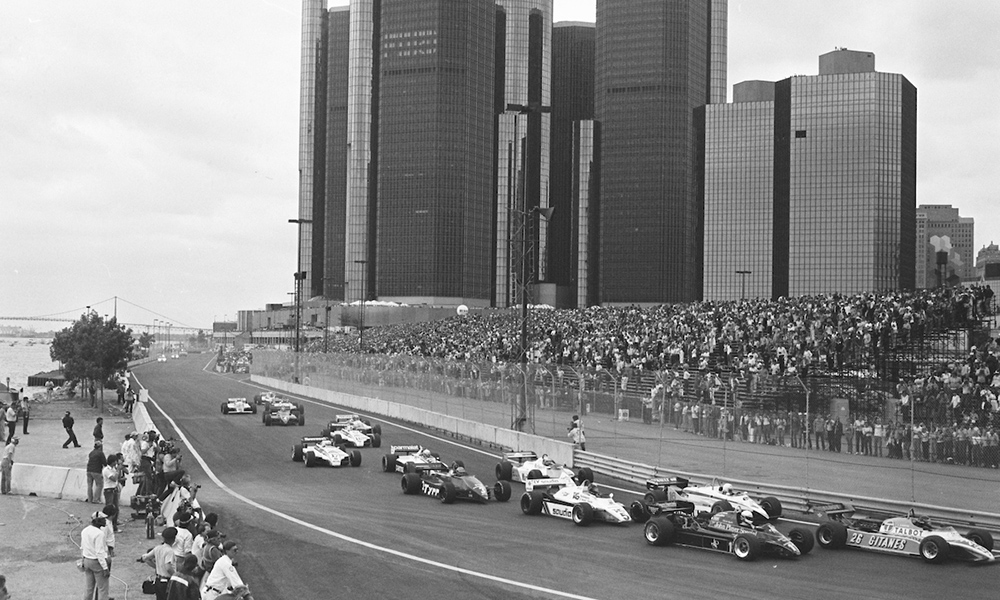
Photo: Roger Hart
Unwritten History
The early moments of the inaugural 1982 Detroit Grand Prix were nearly as bumpy as the manhole lined circuit’s streets.
Early that Friday morning, officials were stunned to discover that several hundred feet of track barrier fencing had mysteriously disappeared overnight. Locating, transporting, and installing replacement fencing significantly delayed the start of the first F1 practice session and pushed the first qualifying session to Saturday morning.
Meanwhile, a surprising and expensive solution to a different challenge was underway in the media center, located in a large Renaissance Center hotel ballroom.
Detroit Renaissance, the nonprofit community group led by top executives of Detroit’s largest companies was the event promoter. Its event team had scheduled weekend catering for the media center beginning with a continental breakfast which was quickly depleted as the international press corps arrived.
Unacquainted with the local staff, the international press initiated a self-help remedy. An Italian journalist lifted a house phone on the media ballroom wall. The hotel operator connected him to catering where he soon became the primary catering contact for the 1982 race weekend. The resulting $57,000 media catering bill would be an estimated $250,000-$300,000 at today’s hotel catering rates.

Photo: Roger Hart
Race Moments
Pierre Dupasquier, the legendary Michelin motorsports leader, suggested McLaren-Ford driver John Watson opt for the harder Michelin compound. He did and won the inaugural race after starting 17th.
Two years later, the race was almost immediately red flagged for a multi-car collision when Nigel Mansell unsuccessfully attempted to split the front row starters, Nelson Piquet and Alain Prost.
As back-up cars were rolled out, Piquet’s Brabham-BMW team rescued the race programmed control chip from the damaged car, installed it on the back-up car and Piquet drove away to give Michelin a second Detroit triumph.
The late Ayrton Senna later captured the final three Detroit events (1986-88) and provided a different pair of memories. In 1986, Senna claimed the pole aboard his Lotus-Renault, but skipped the traditional press conference as he raced to the hotel elevator and his room to watch Brazil ultimately lose to France on penalty kicks in the FIFA World Cup quarter-final in Mexico.
Following one of his victories, Senna hopped aboard a scooter, bypassed the waiting media, and boarded a helicopter on the Convention Center rooftop.
A certain Mr. B. Ecclestone was reportedly not amused and new rules and penalties were soon instituted regarding podiums and press conferences.
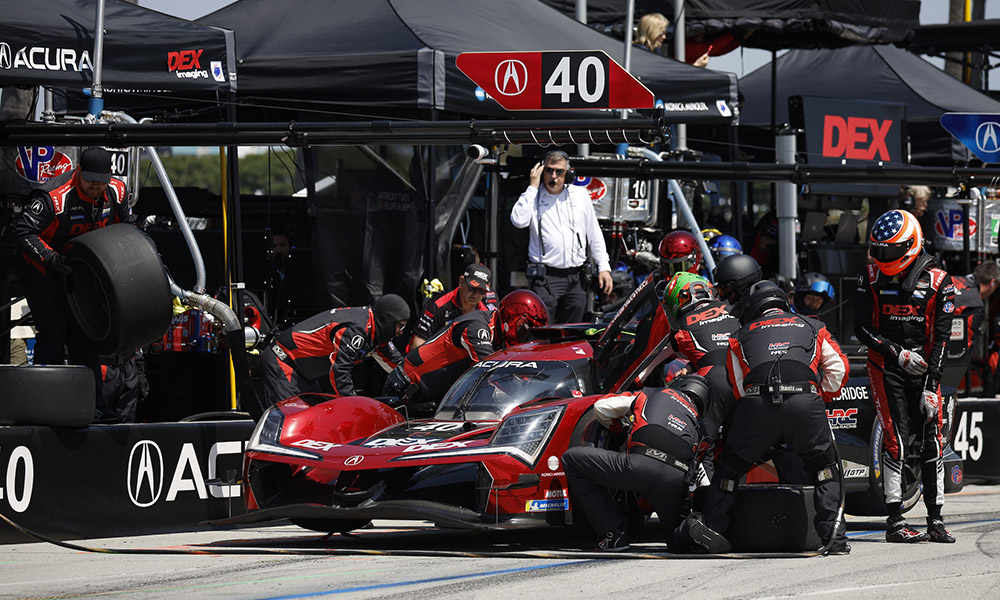
Photo: Mike Levitt/IMSA
“Softly” Writing the Next Chapter
Unlike Watson’s 1982 victory on the then “hard” Michelin tread compound, the 2024 IMSA GTP teams will race on the latest Michelin “soft” compound tires.
The ability to run extended stints on a soft tread compound tire is the latest example of Michelin’s continued progress in delivering both performance and extended tread life, a major priority for both consumers and race teams.
The Michelin soft compound GTP tire made its IMSA street course debut this April in Long Beach, where the winning Cadillac V-Series.R GTP hybrid from Chip Ganassi Racing ran the entire 100-minute race on a single set of the Michelin soft-compound tires.
Demonstrating the level of performance Michelin delivered, winning co-driver Renger van der Zande’s final two laps of the race (laps 67-68) were a 1:12.9 and a 1:13.0 on the 68th and final lap, just four-tenths of a second off the fastest lap of the race, a 1:12.626 set by his co-driver Sebastien Bourdais on lap 21.
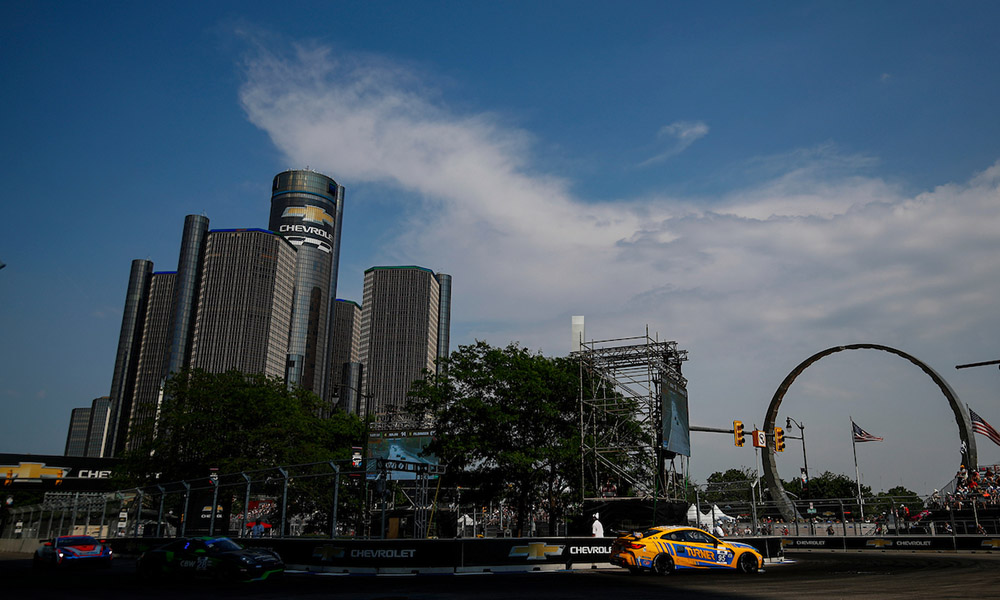
Photo: Jake Galstad/IMSA
Winning the Detroit Weekend
The 1982 Detroit Grand Prix circuit was 2.59 miles in length with 18 turns, today’s reimagined temporary circuit measures 1.654 miles with nine turns.
Racing on the streets of downtown Detroit for the first time, the IMSA WeatherTech GTP and GTD Pro class drivers and engineers will be looking for consistent gains and trying to anticipate changes in grip levels as the circuit evolves.
“It could be a struggle to optimize the ride height compromise. Teams will want to run low to optimize straight-line speed, but high enough to not be affected by the bumpy nature of the circuit,” said Hans Emmel, Michelin Motorsports IMSA WeatherTech series manager.
“Straight-line braking and traction out of corners to maximize speed on the straights could be key, as the circuit is composed mainly of very tight corners followed by straights and back into a tight corner again.”




















